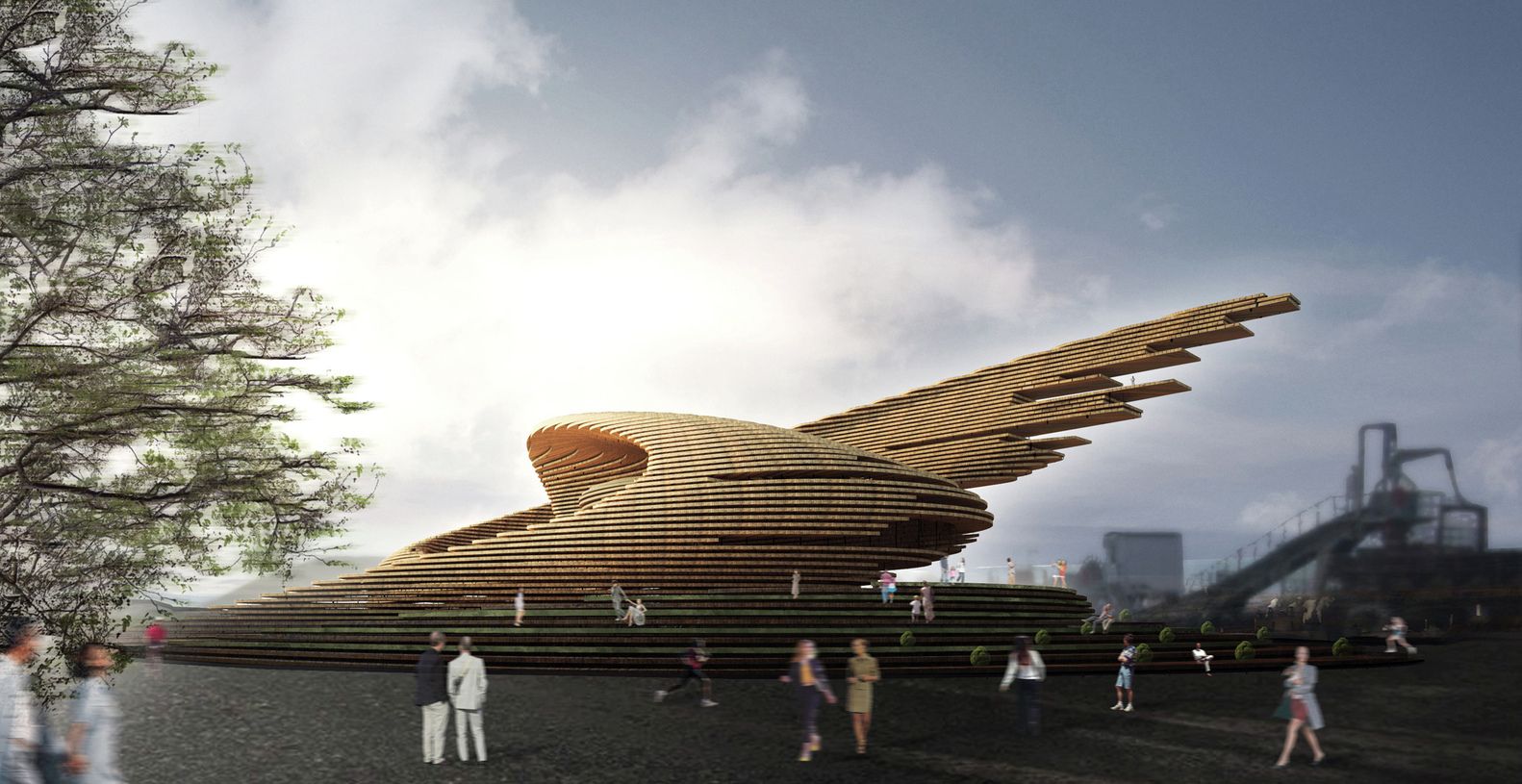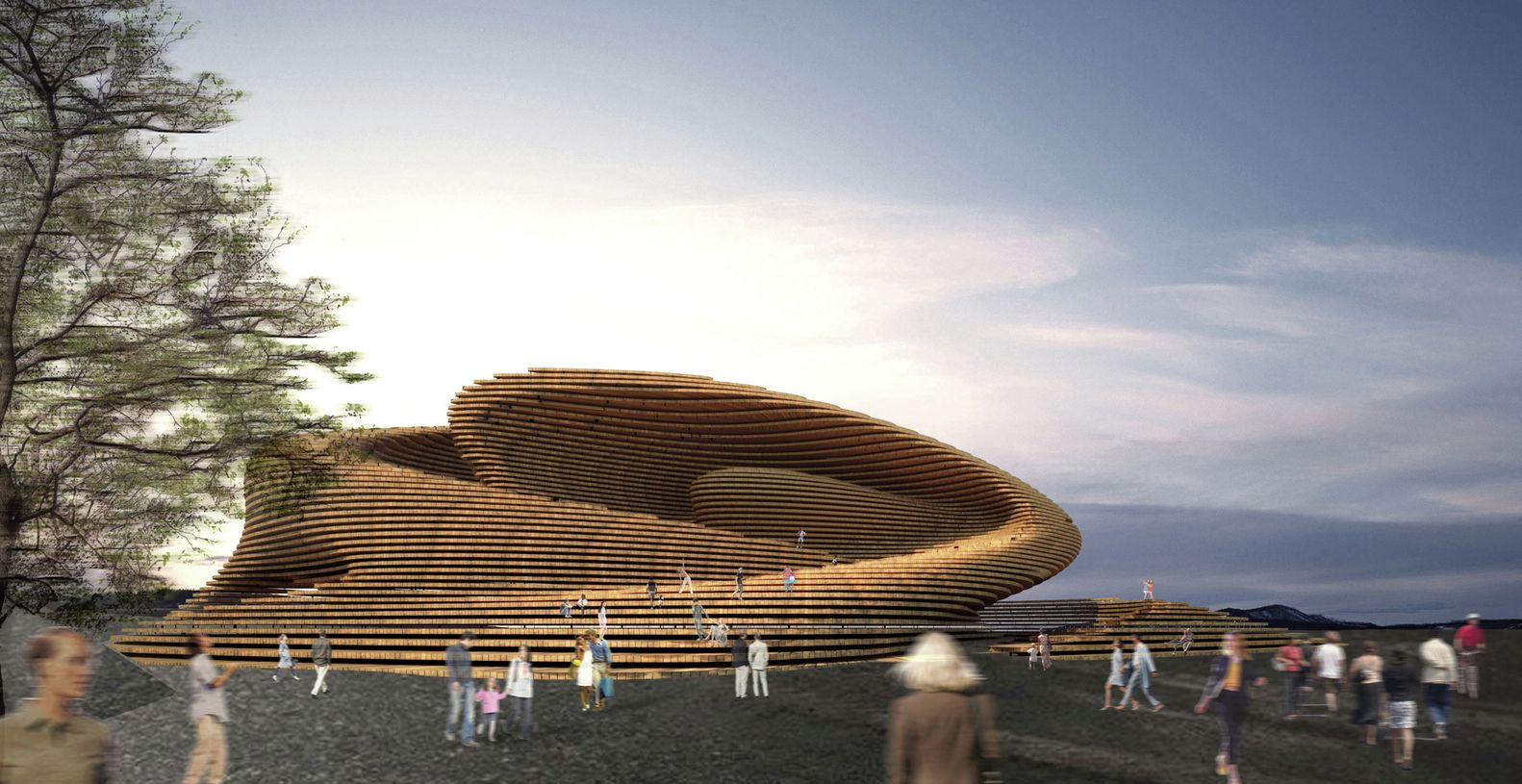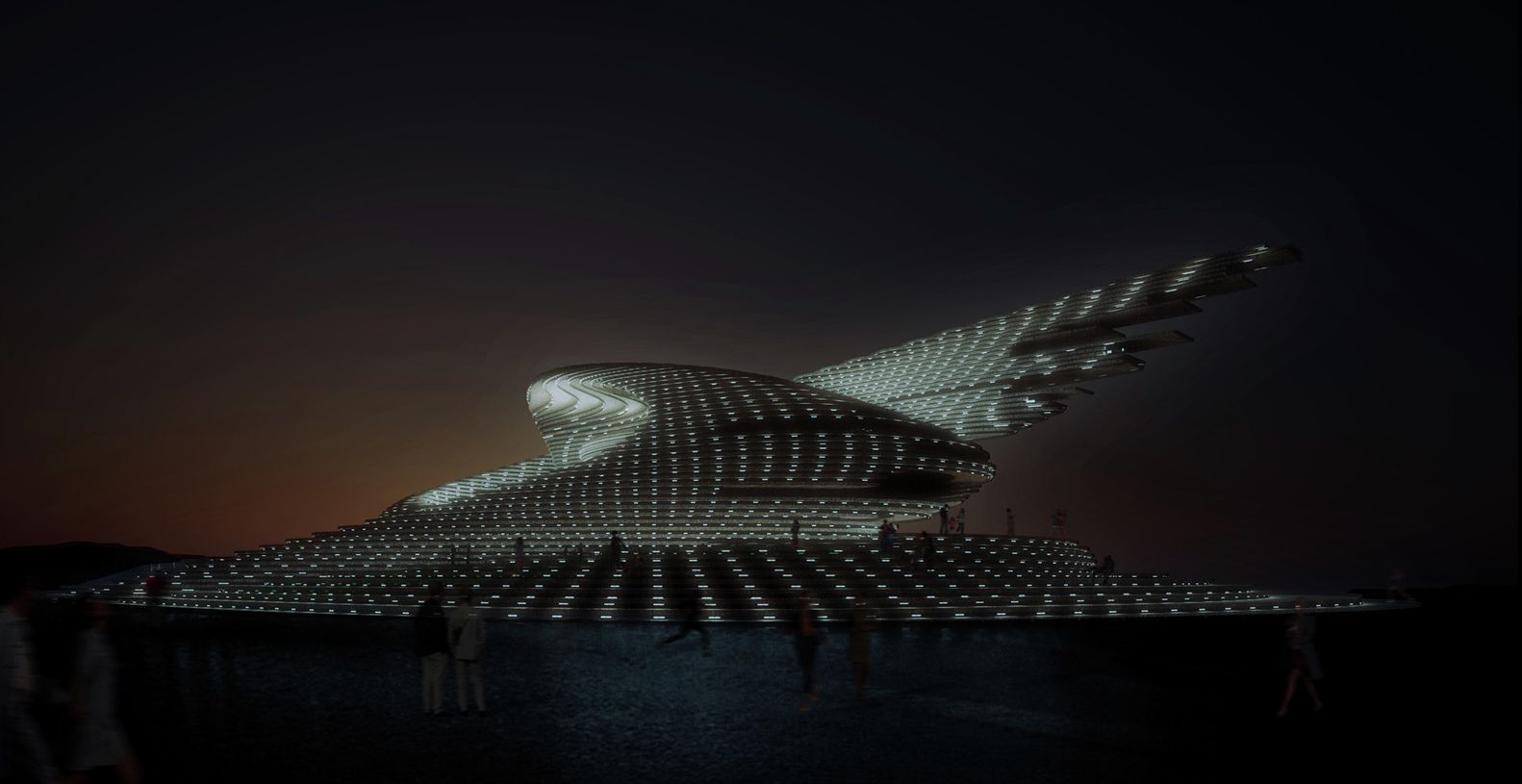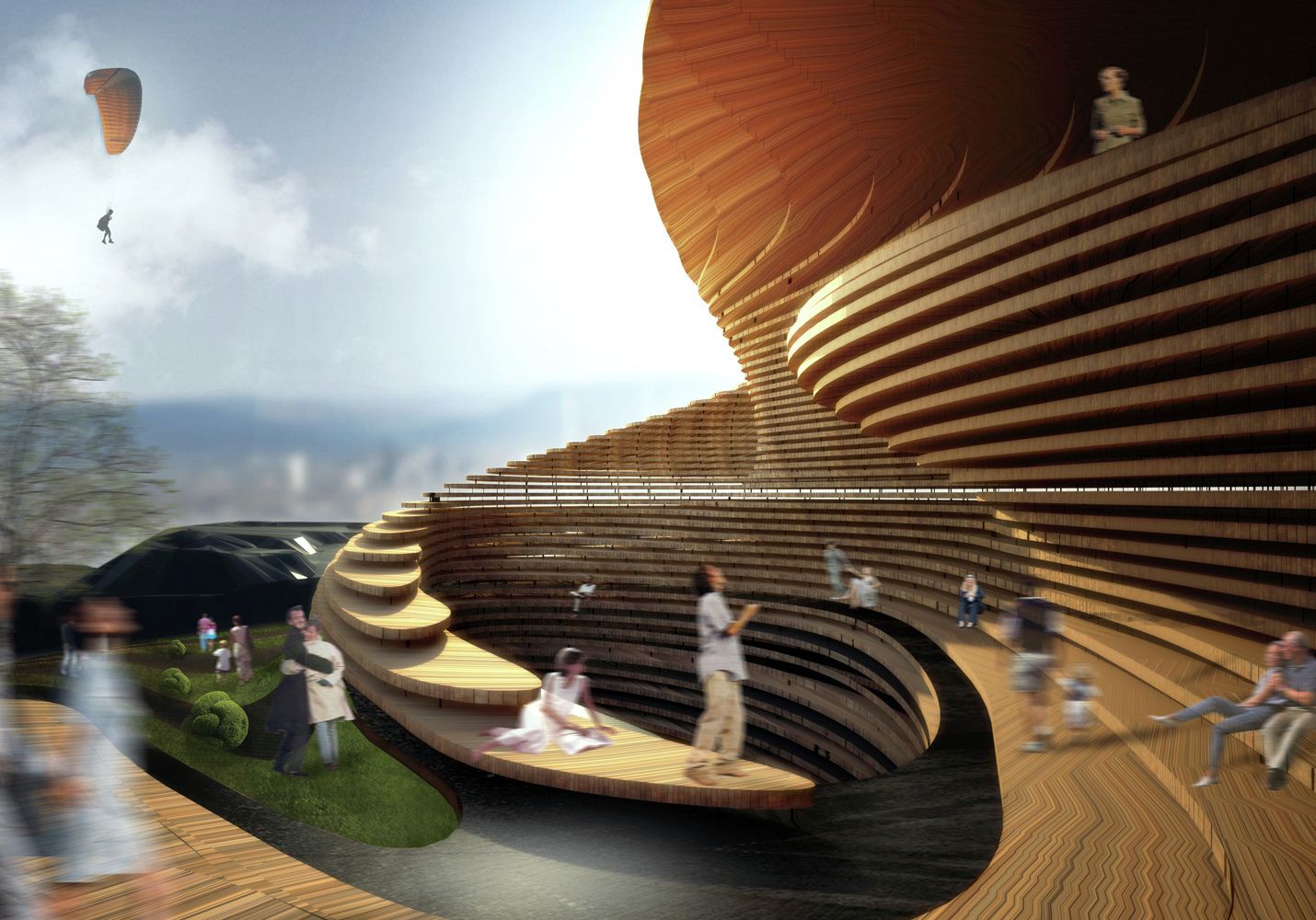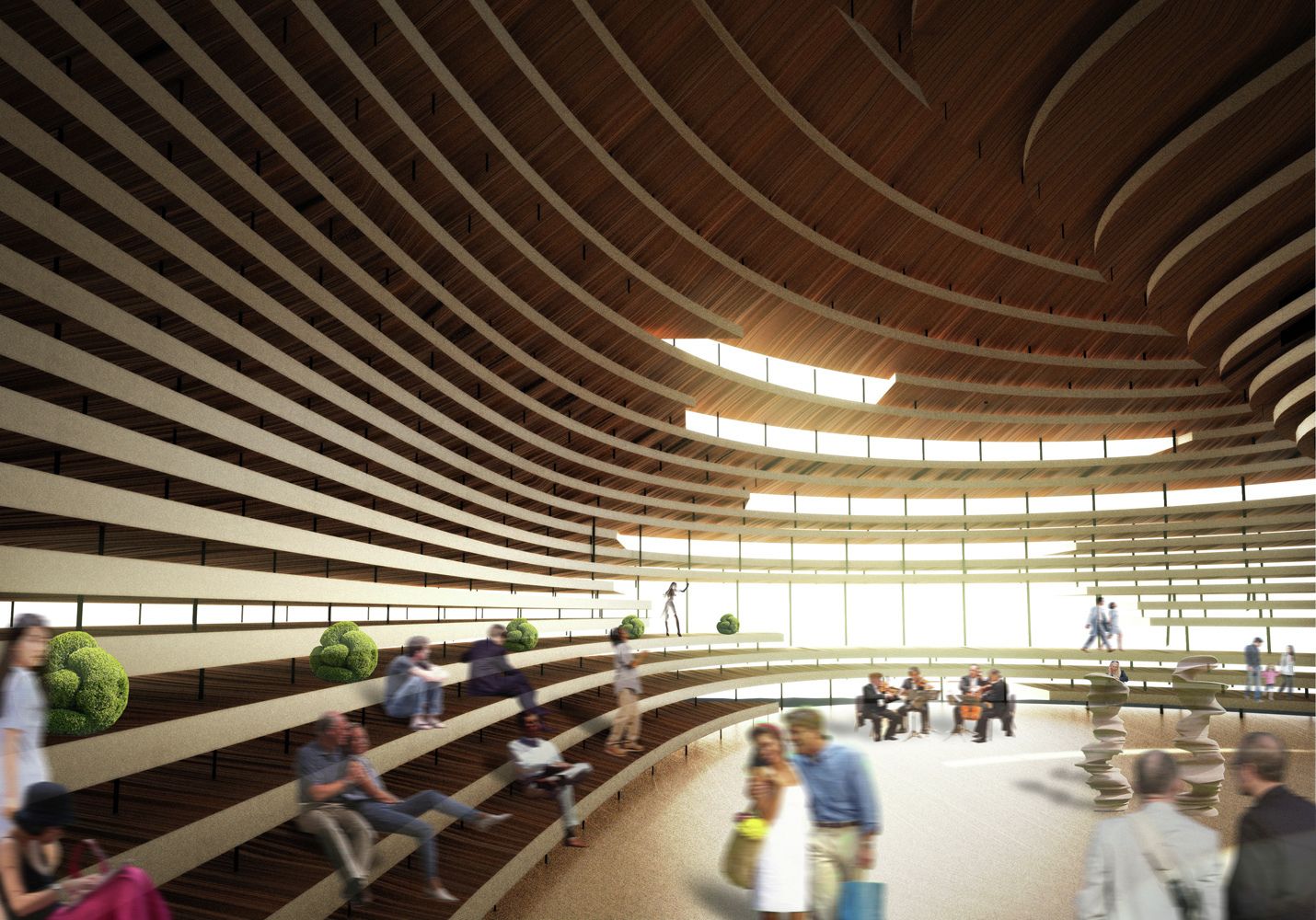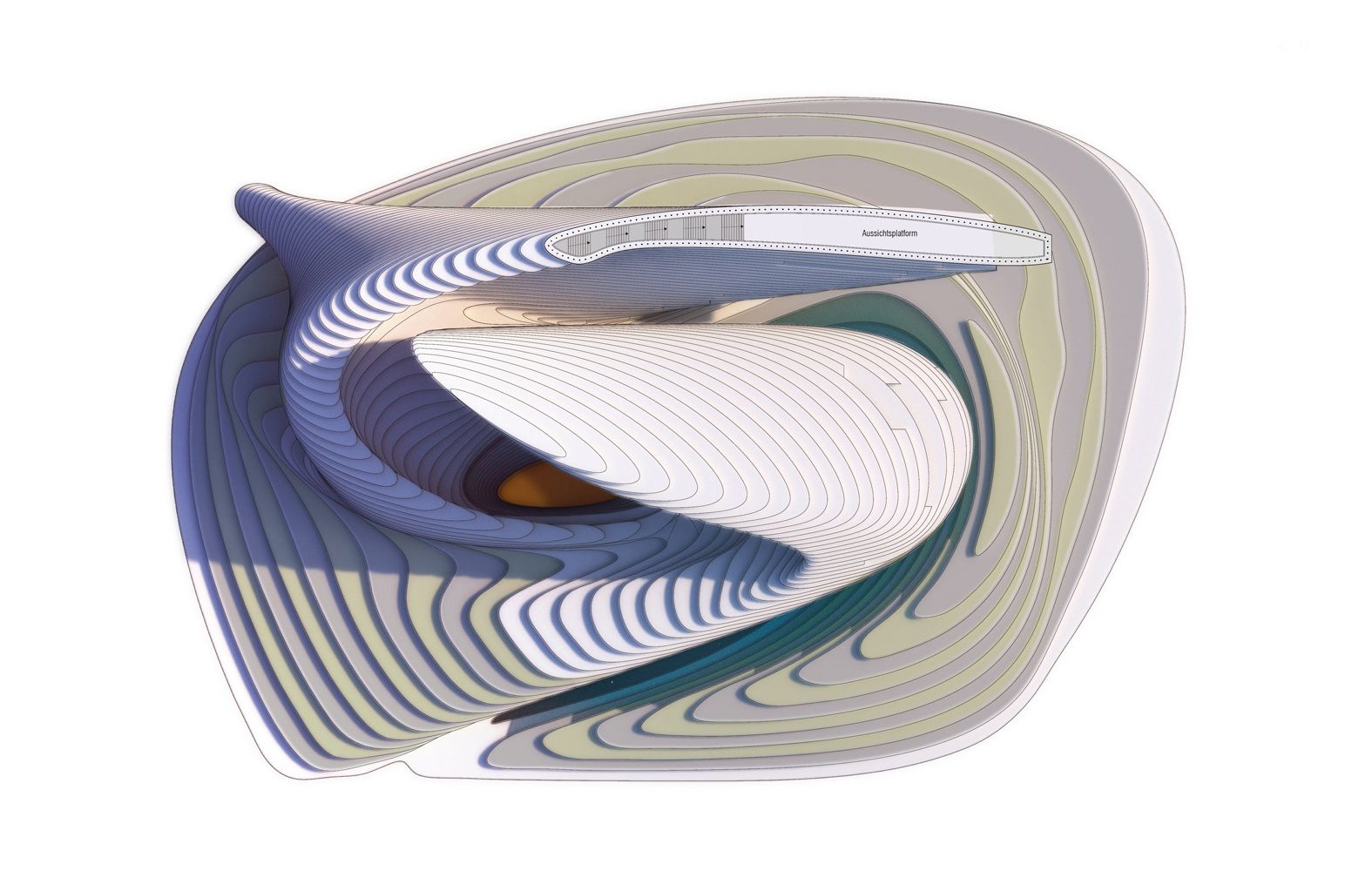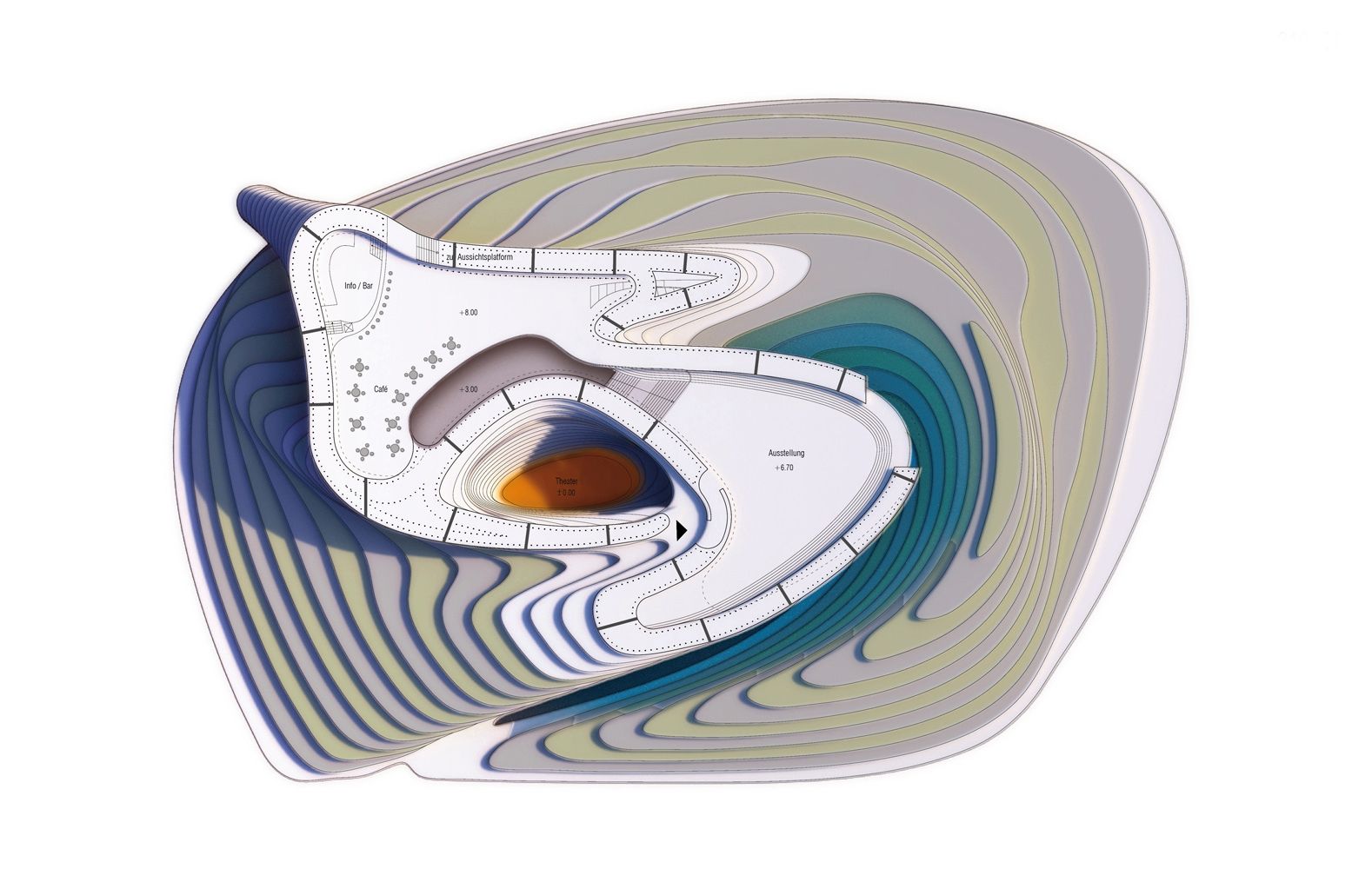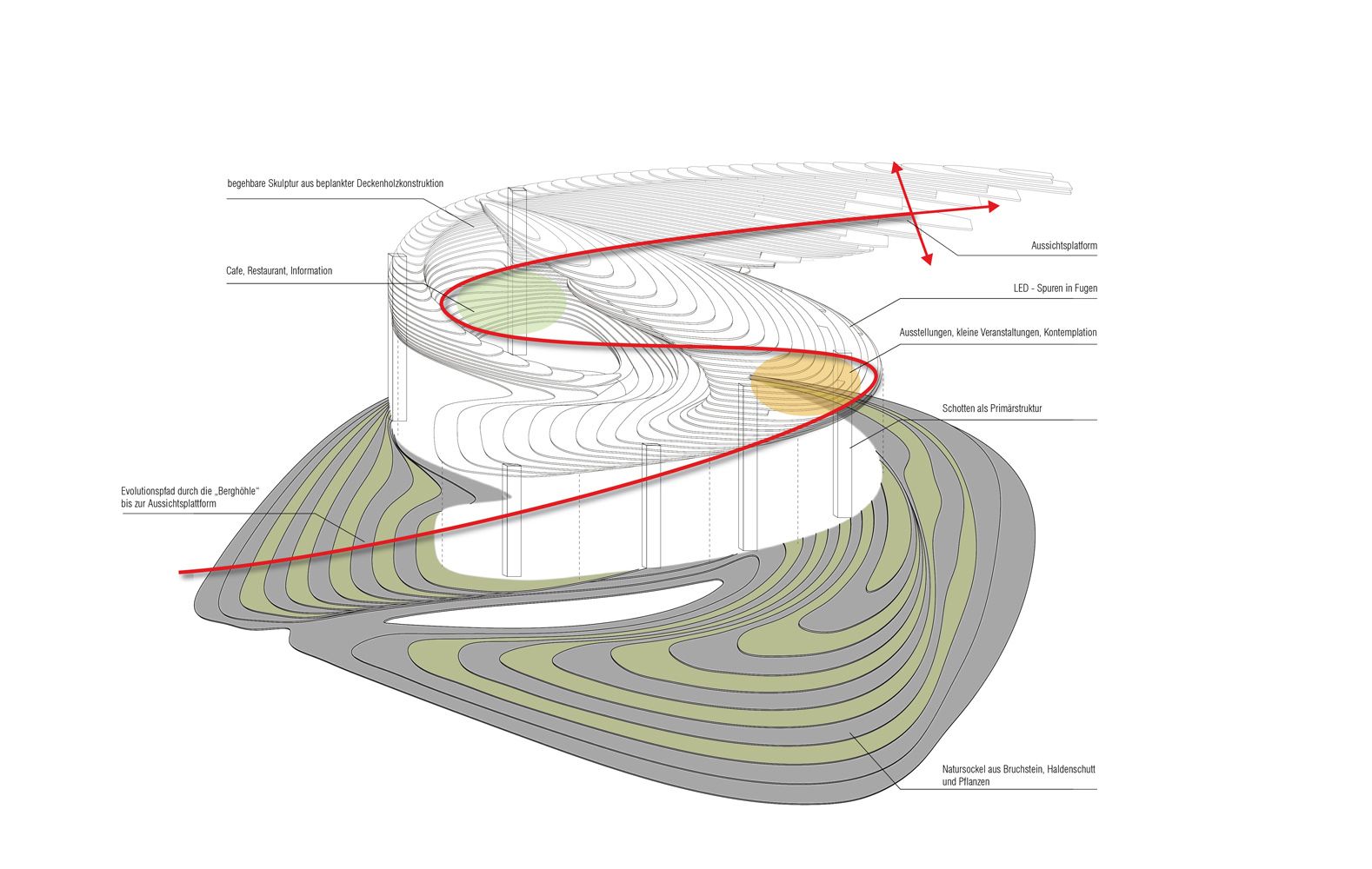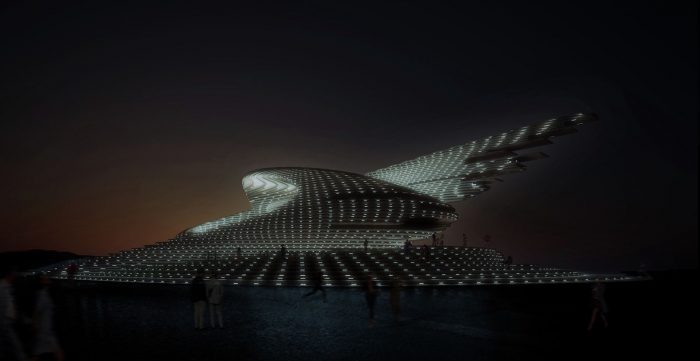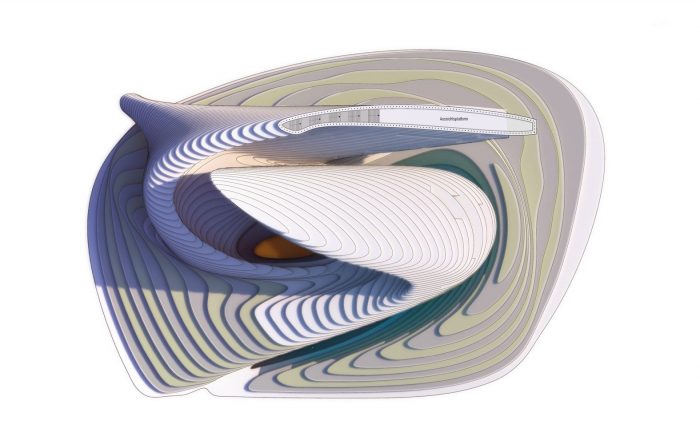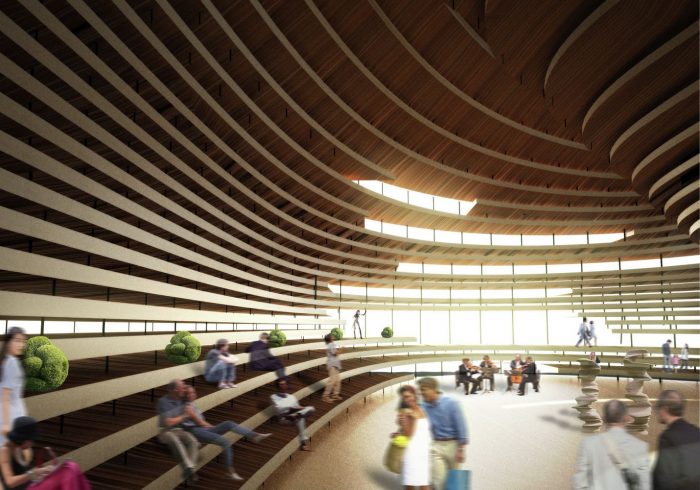EverREST, by Simon Takasaki, was designed in 2011 for a competition calling for a landmark in Duhamel, Germany. I think what is very poignant in this project is how much we miss as architects if we only ever look to the distance for inspiration. The idea for this project’s construction could have been sitting on any architecture student’s studio desk. Perhaps it is the fact that we’ve made the art of stacking feel cheap with all of our default ‘stacked chipboard topo models’ but the process just doesn’t seem to be used very often. And this doesn’t apply to brick or stone- that’s different. Those are stacked in a two dimensional way, only striving to make a wall. When we build topos we stack to make a form. Why can’t we do this in buildings? No reason, we have the technology. We can build them better than we did before.
The stacked (apparently) timber masses flow together to create a form that holds its occupants while itself being held by circumstance. Placed atop an old mining site, it stands as if being a wisp of breezing from the mouth of a cave (or a mine). Form turns in on itself to create a main auditorium space for contemplation and inspiration alike. This flowing form continues on its path before fragmenting and terminating as if in the middle of a question. This is the past, what do we thing of the fut.
